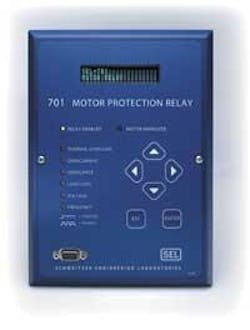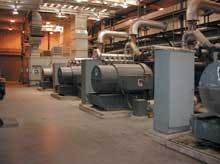Utility-grade relays protect critical motors in Denver wastewater plant
By Ed Sullivan
The Metro Wastewater Reclamation District (Metro) in Denver, Colorado, USA, replaced its ageing motor protection relays with SEL-701 utility-grade relays to protect its aeration blower motors and prevent any downtime.
The relays, manufactured by Schweitzer Engineering Laboratories (SEL) of Pullman, Washington, USA, feature a Sequential Events Recorder (SER) that reports faults and acts as an analytical tool in addition to the SEL-701's integral metering and communications functions. The industrial headquarters is located in Franklin, Tennessee, USA.
Metro treats 150 million gallons per day from its 380-square-mile district, contributing 90 percent of the South Platte River's flow at the point of discharge for nine months of the year. Its huge throughput requires that water processing continues with virtually no interruptions. Any sustained interruption of reclamation processes could result in devastating consequences.
"From a practical standpoint, most equipment service is an emergency at a facility such as Metro," says Andy Leoni, Manager of Engineering at NEI Electric Power Engineering, which engineers the design and service of Metro's electrical and communications systems. Wastewater plants are inherently harsh environments for electronic equipment, due to the presence of hydrogen sulphide and dust in the air. "Hydrogen sulphide causes corrosion in power system materials such as copper and silver plated copper," Leoni explained, "and this type of corrosion is very hostile to protective relays and electronic controls."
NEI has been studying and redesigning the entire Metro power system for the past six years. Of specific concern were the electric motor protection relays that protected the motors powering several 15 kV and 5 kV aeration blowers. "The usual industrial-grade relays that were already in use didn't provide the reliability or security we wanted," Leoni said, so NEI ultimately decided to purchase more rugged utility-grade relays from SEL.
One of the pre-existing industrial-grade relays failed while completing the plant design. Metro's maintenance supervisor, Jim Carabajal, and maintenance planner, Larry Dulworth, contacted NEI in dire need. "We had contacted the manufacturer of the failed relay (the second failure in about 10 years). The price and delivery seemed outrageous, so we asked Andy if we could use a retrofit SEL-701 instead," said Dulworth. "Amazingly, this utility-grade device was not only more durable and robust than the industrial-grade counterpart, but it was also less expensive and required much less lead time for delivery."
NEI first introduced Metro to Schweitzer products in the cogeneration section of the Metro plant. The anaerobic digestion process produces biosolids and methane, which fuels four large electrical generators, heats 10 anaerobic digesters and provides electrical power and heat to other buildings on the plant site. Most of the electrical power was sold to Public Service of Colorado, generating about US$ 1.6 million in revenues per year. Two new, more efficient gas turbine units were installed.
The new gas turbines had to meet Public Service's system interconnect requirements, which was accomplished with Schweitzer's SEL-351 and 300G relays. The SEL-351 units were connected via a SEL-2030 communications processor to the existing distributed control system.
NEI's redesign of Metro systems places some emphasis on system integration, automation and communications. A new fiber optic network will soon be installed, connecting all of the SEL-2030s and their associated relays to Metro's distributed control system.
Author's noteEd Sullivan is a freelance writer working for Power PR, based in Torrance, California, USA.


